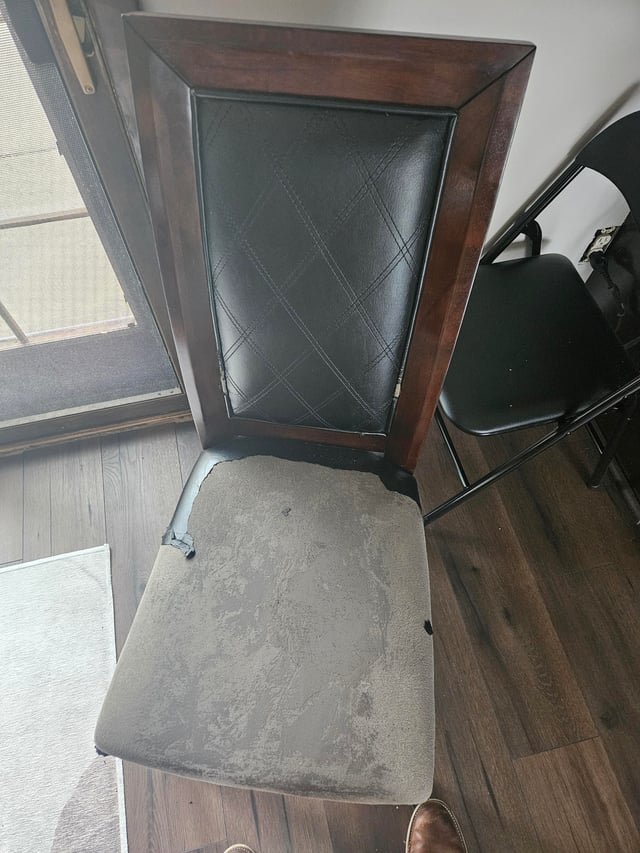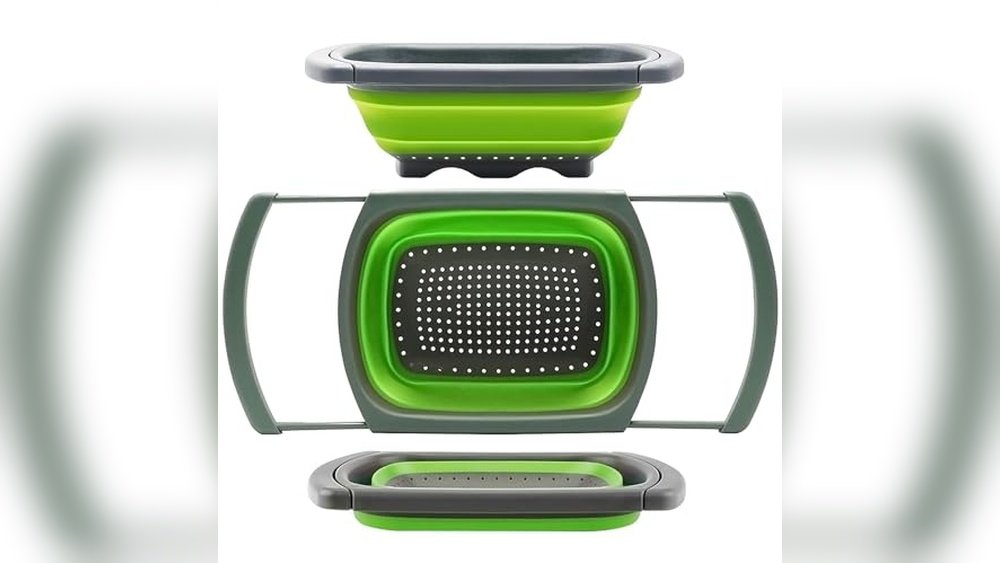Are your upholstered dining chairs looking tired and worn out? You don’t have to replace them just yet.
Imagine giving your favorite chairs a fresh, new look without spending a fortune. Recovering your dining chairs is easier than you think, and it can completely transform your dining space. In this guide, you’ll discover simple steps and expert tips to bring life back to your chairs.
Ready to turn your old furniture into something beautiful and inviting? Keep reading, and let’s get started!

Credit: www.reddit.com
Tools And Materials Needed
Recovering upholstered dining chairs needs the right tools and materials. Good preparation helps the process go smoothly. Using correct supplies makes the job easier and the result better.
Essential Tools
Start with a staple remover or flathead screwdriver. These help take off old fabric carefully. A pair of scissors is needed to cut new fabric. A staple gun fastens the fabric to the chair frame. Needles and strong thread come in handy for sewing. A measuring tape ensures fabric fits well. Pliers help pull out old staples or tacks.
Choosing The Right Fabric
Select fabric that is durable and easy to clean. Cotton blends and polyester work well for dining chairs. Pick a fabric with a tight weave to resist spills. Avoid delicate materials like silk or velvet. Choose colors and patterns that match your dining room. Consider texture for comfort and style.
Additional Supplies
Foam or batting may be needed to refresh padding. Spray adhesive keeps foam in place. Fabric glue can fix small tears or edges. Marking chalk helps outline cutting lines. Gloves protect your hands during the work. A dust mask keeps you safe from dust and fibers.
Credit: thediyplaybook.com
Preparing The Chairs
Preparing your dining chairs for reupholstery is the first step to a fresh, stylish look. This stage sets the base for a smooth recovery process. Proper preparation helps avoid problems later and ensures lasting results. Take your time to do this right.
Removing Old Upholstery
Start by turning the chair upside down or on its side. Use a screwdriver or pliers to remove staples or tacks holding the fabric. Pull off the old fabric carefully to avoid damage to the frame. Keep the pieces of old fabric as a pattern for the new material. Remove any padding or foam that is worn out or damaged. Dispose of old materials properly to keep your workspace clean.
Cleaning And Inspecting Frames
After removing the fabric, clean the chair frame thoroughly. Use a soft brush or cloth to remove dust and dirt. Check the wood or metal for cracks, loose joints, or damage. Tighten screws or glue loose parts for stability. Sand rough areas gently to prevent splinters. A clean, sturdy frame is vital for a strong, beautiful new upholstery.
Measuring And Cutting Fabric
Measuring and cutting fabric is a key step in recovering upholstered dining chairs. It ensures the fabric fits well and looks neat. Careful measurement avoids wasting fabric and helps achieve a smooth finish. Cutting the fabric properly makes the reupholstering process easier and faster.
Taking Accurate Measurements
Start by removing the old fabric carefully. Use a tape measure to check the seat and backrest dimensions. Measure the width, length, and thickness. Add extra inches for wrapping around edges and stapling. Note down all measurements clearly. Double-check each number before cutting.
Cutting Fabric For Perfect Fit
Lay the fabric flat on a clean surface. Place the measured dimensions on the fabric. Mark the cutting lines with chalk or a fabric pencil. Cut slowly and follow the lines precisely. Keep the fabric stable to avoid uneven edges. Cutting cleanly helps the fabric fit tightly on the chair.

Credit: www.walmart.com
Attaching New Upholstery
Attaching new upholstery is a key step in restoring your dining chairs. This process gives your chairs a fresh look and ensures the fabric stays in place. It requires careful handling to avoid wrinkles and loose areas. Follow these steps to attach fabric neatly and securely.
Positioning The Fabric
Start by laying the fabric over the chair seat evenly. Make sure the pattern, if any, is straight and centered. Leave extra fabric around the edges for stapling. Check the fabric’s direction to match the chair style.
Stapling And Securing
Use a staple gun to attach the fabric to the underside of the seat. Begin stapling from the center of one side. Pull the fabric tight and staple the opposite side next. Continue stapling around the edges, working from center to corners. Add extra staples near corners to hold the fabric firmly.
Smoothing Wrinkles And Creases
After stapling, check the fabric surface for any wrinkles. Gently pull the fabric tight to smooth out creases. Avoid stretching too much to prevent damage. Use your hands to press the fabric flat and even. Fix any loose areas by adding more staples if needed.
Adding Finishing Touches
Adding finishing touches to your recovered dining chairs makes a big difference. It gives the chair a neat, polished look. These final steps help secure the fabric and restore the chair’s original charm.
Trimming Excess Fabric
Cut away extra fabric close to the staples or tacks. Use sharp scissors for clean cuts. Leave about half an inch to avoid unraveling. Be careful not to cut too close to the frame.
Reattaching Chair Components
Put back any removed parts like seat cushions or decorative trims. Tighten screws and bolts firmly. Check that all parts fit well and are stable. This step ensures your chair feels solid and complete.
Optional Decorative Elements
Consider adding nailhead trim or fabric buttons for style. These small details can enhance the chair’s look. Use a glue gun or upholstery tacks to attach them. Choose decorations that match your room’s theme.
Maintenance Tips For Longevity
Keeping your upholstered dining chairs in great shape takes simple care habits. These small steps help keep fabric fresh and strong. A little effort today saves money later. Follow these tips to enjoy your chairs longer.
Cleaning Upholstered Chairs
Dust and dirt damage fabric over time. Vacuum chairs regularly using a soft brush. Spot clean spills immediately with a mild soap and water. Avoid harsh chemicals that can ruin fabric. For deep cleaning, use upholstery cleaners made for your fabric type.
Protecting Fabric From Wear
Rotate chairs often to avoid uneven wear. Use chair pads or slipcovers to shield fabric. Keep chairs away from direct sunlight to prevent fading. Avoid sharp objects that can tear or scratch. Encourage gentle use to maintain fabric strength.
When To Reupholster Again
Look for worn spots or thinning fabric. Check for stains that do not come out. Notice if padding feels flat or uncomfortable. Loose or broken springs also signal reupholstery time. Act early to restore comfort and beauty before damage worsens.
Frequently Asked Questions
How Do I Clean Upholstered Dining Chairs Safely?
Use a vacuum with an upholstery attachment to remove dust. Spot clean with mild soap and water. Test cleaners on a hidden area first. Avoid harsh chemicals that damage fabric or wood.
What Materials Are Best For Upholstering Dining Chairs?
Choose durable fabrics like microfiber, leather, or heavy cotton blends. These materials resist stains and wear. They provide comfort and style, lasting longer in dining environments.
How Often Should I Recover Dining Chair Upholstery?
Recover upholstery every 5-10 years, depending on use and condition. Regular cleaning extends fabric life. Replace sooner if fabric is torn, stained, or faded.
Can I Recover Dining Chairs Myself?
Yes, with basic tools and patience, DIY recovering is possible. Follow tutorials and measure fabric carefully. For complex designs or antique chairs, consider professional help.
Conclusion
Recovering upholstered dining chairs can save money and add style. Choose the right fabric and tools for best results. Take your time and follow each step carefully. Clean and prepare the chair before starting work. Stretch fabric tightly to avoid wrinkles or sagging.
Replace old padding for extra comfort and support. Small repairs make chairs look fresh and new again. Enjoy your renewed furniture and the cozy space it creates. Keep chairs clean to maintain their beauty longer. A little effort goes a long way in home care.




